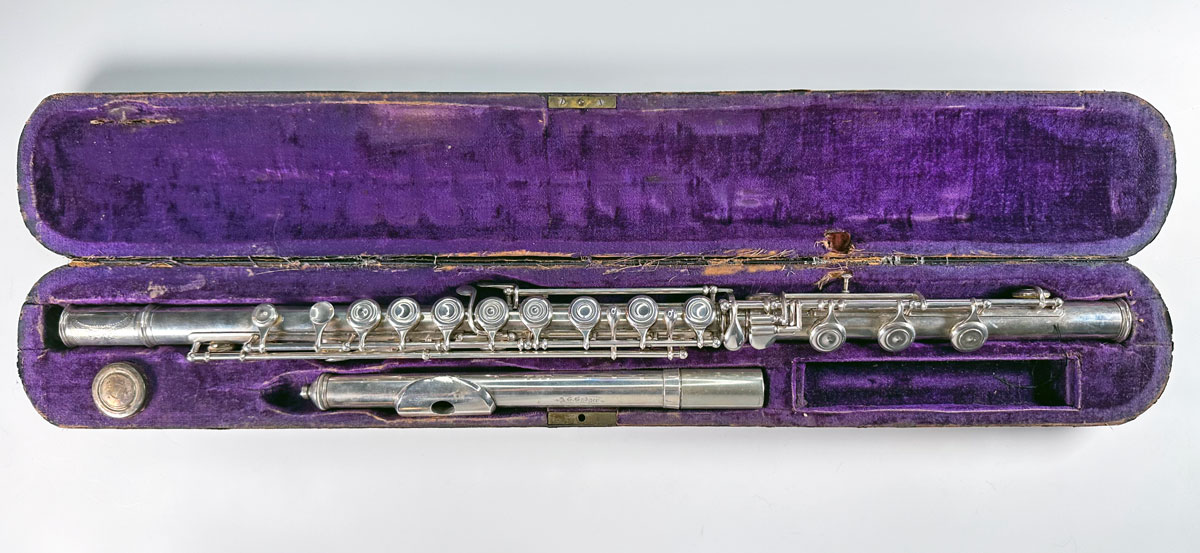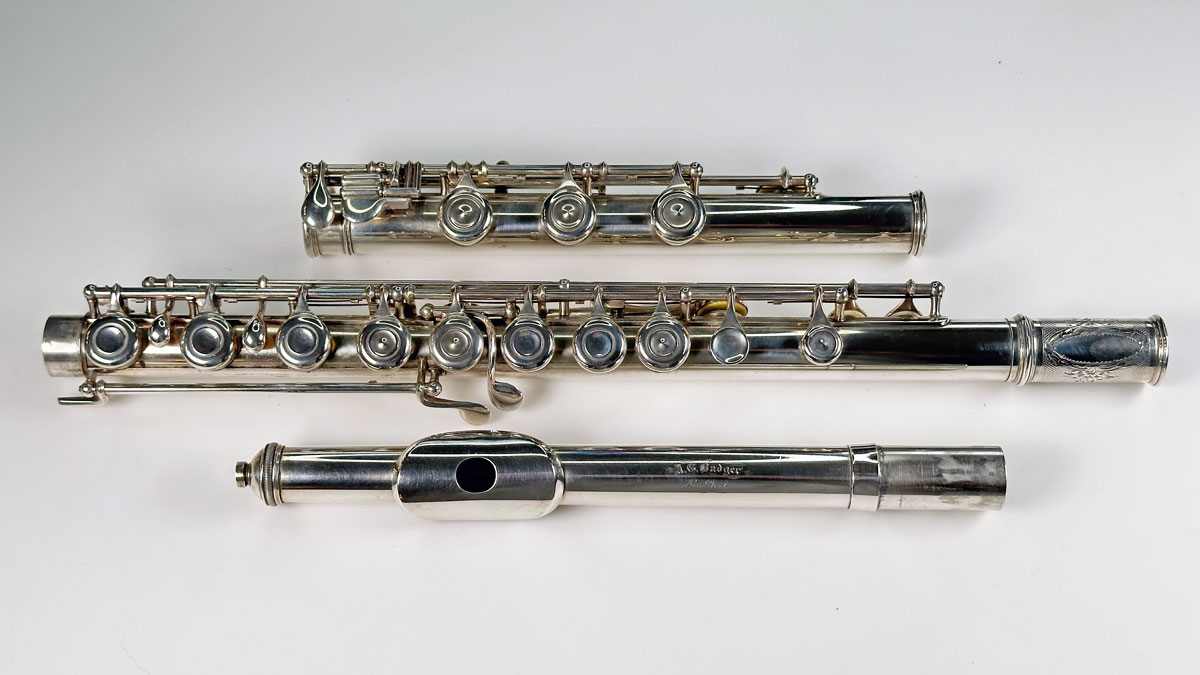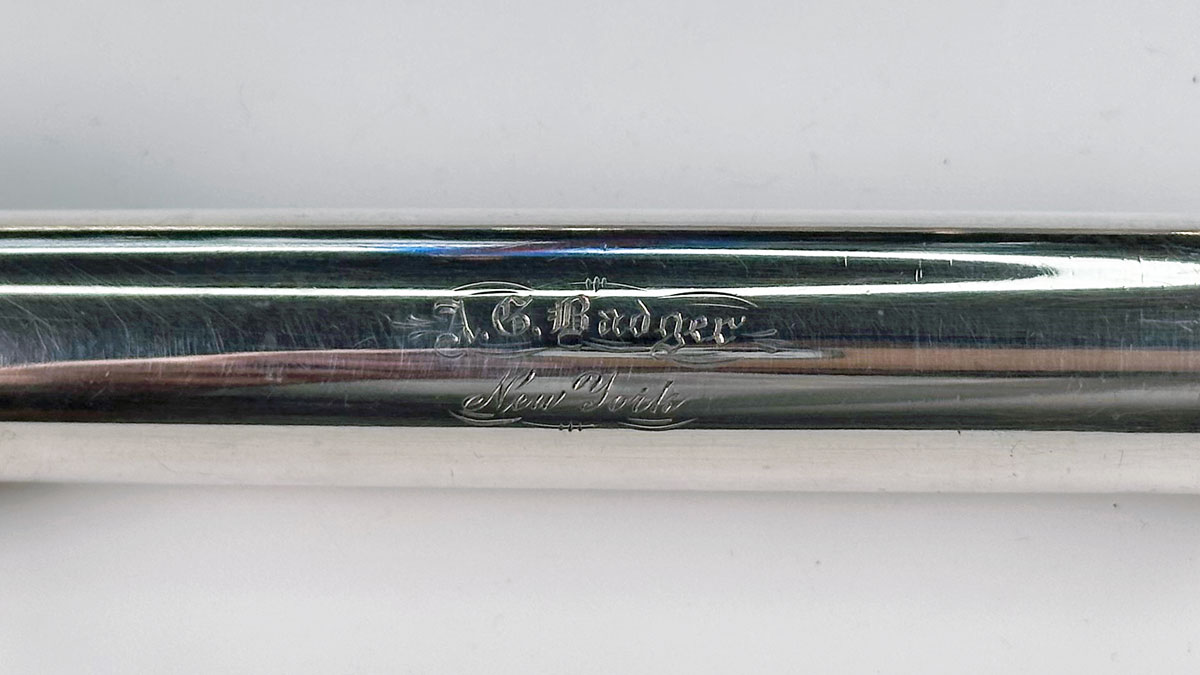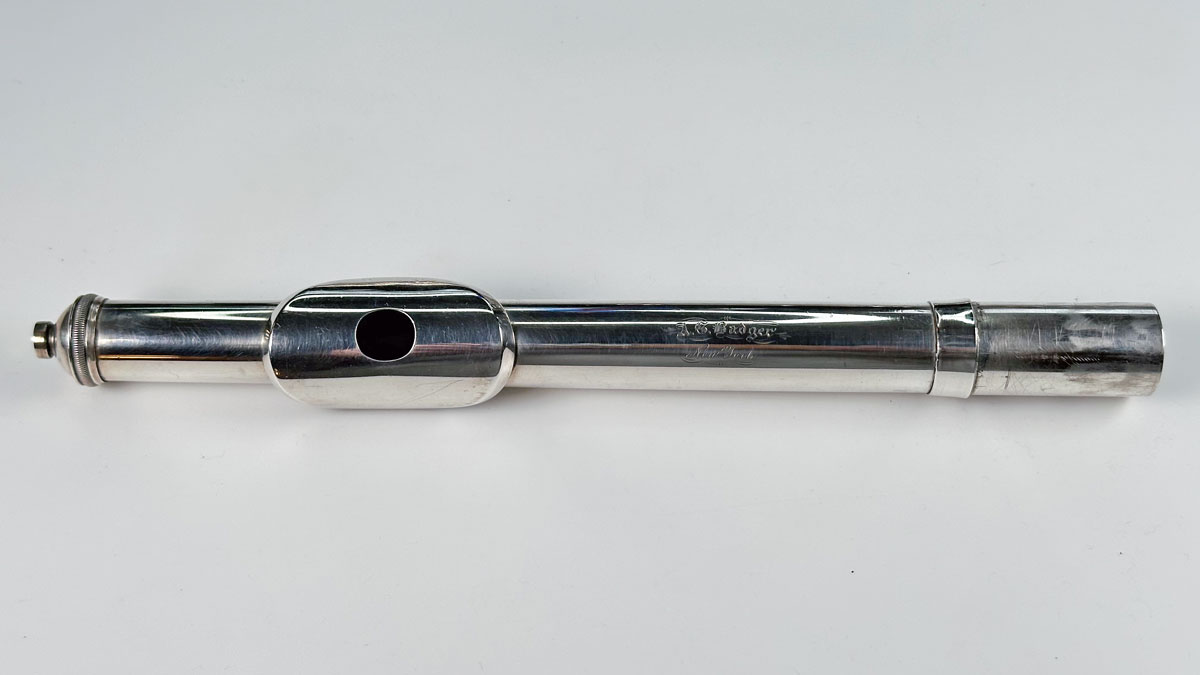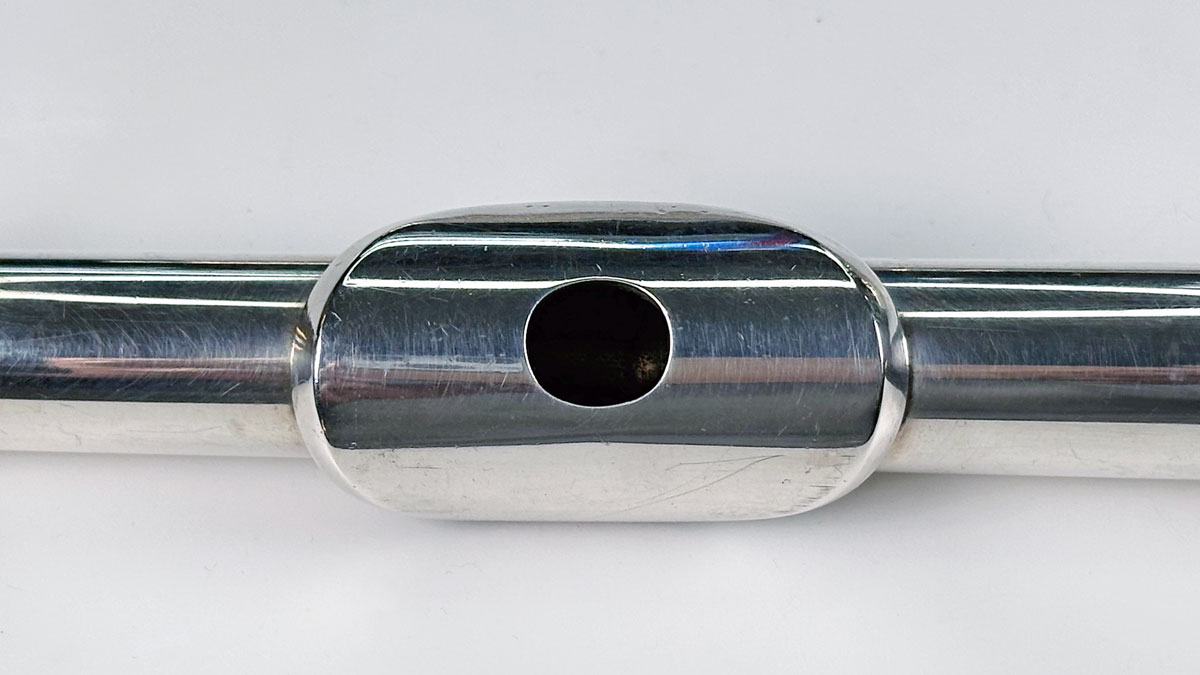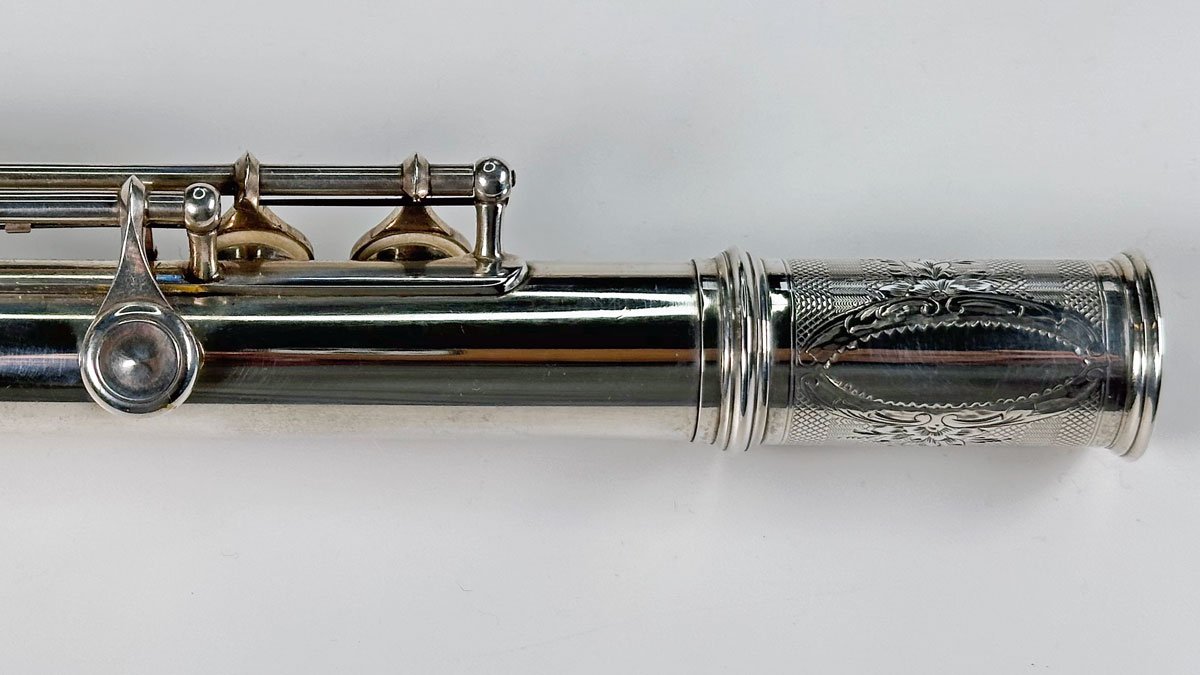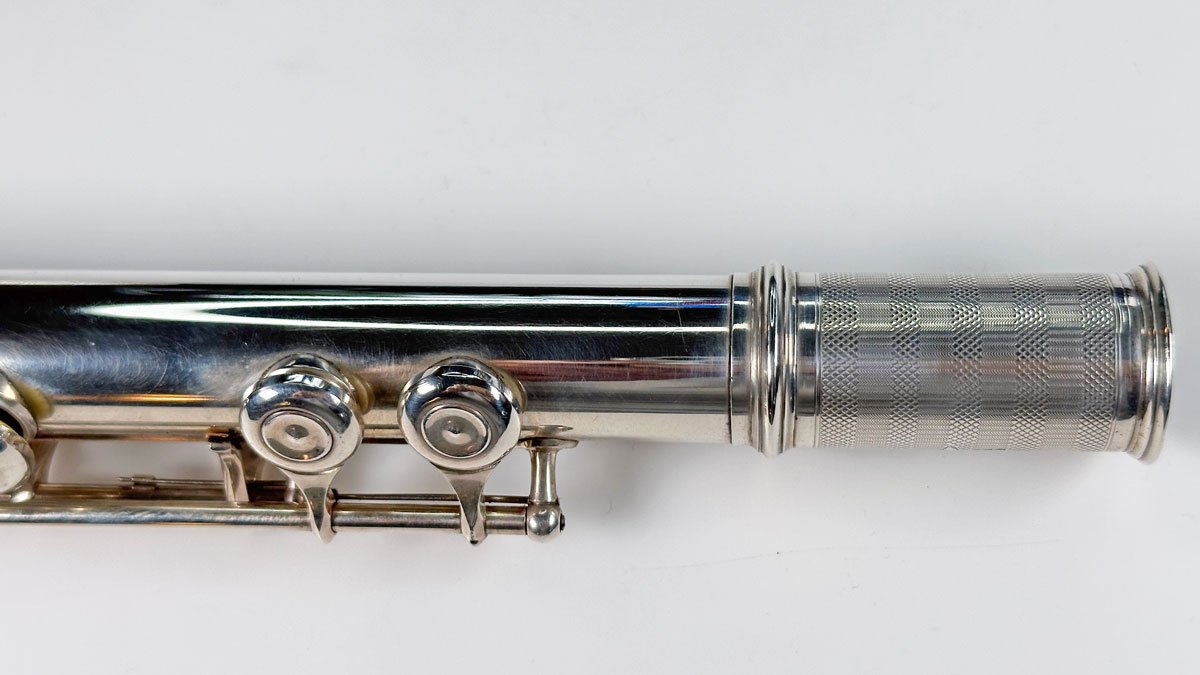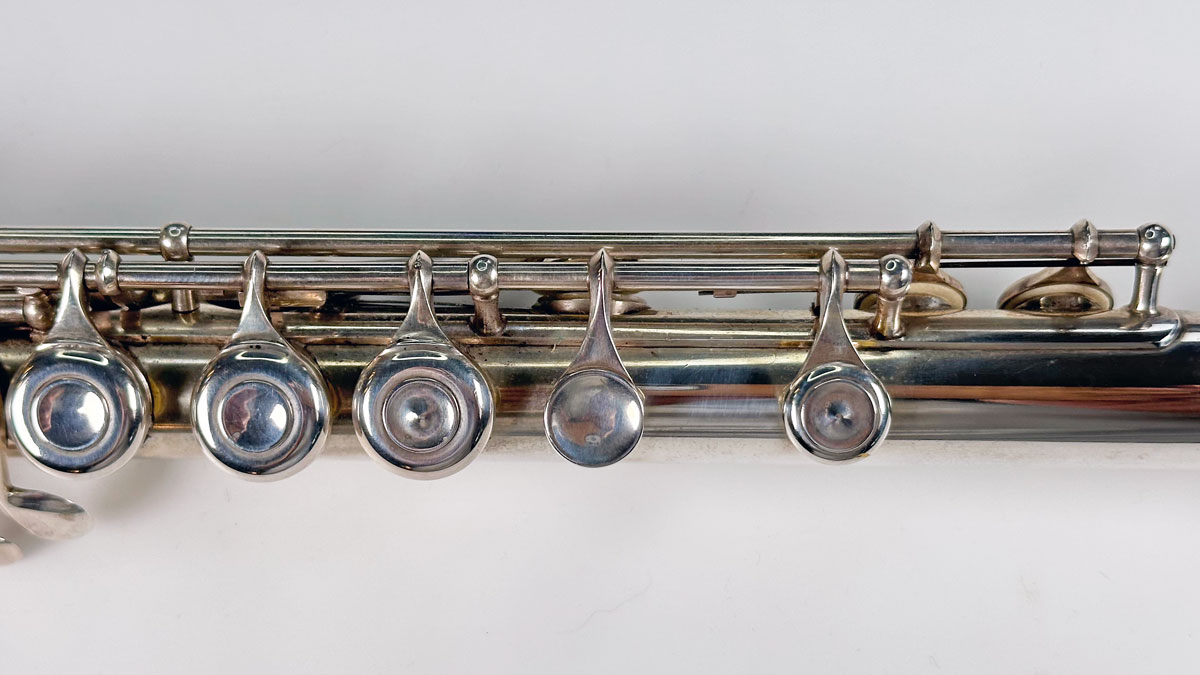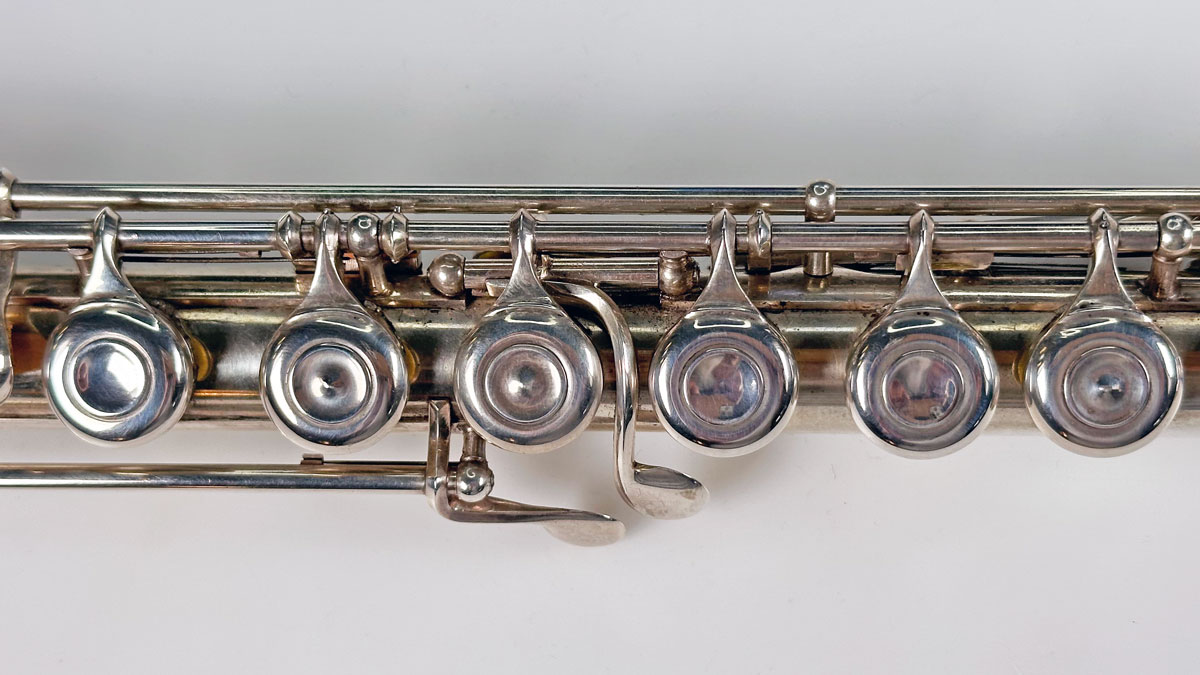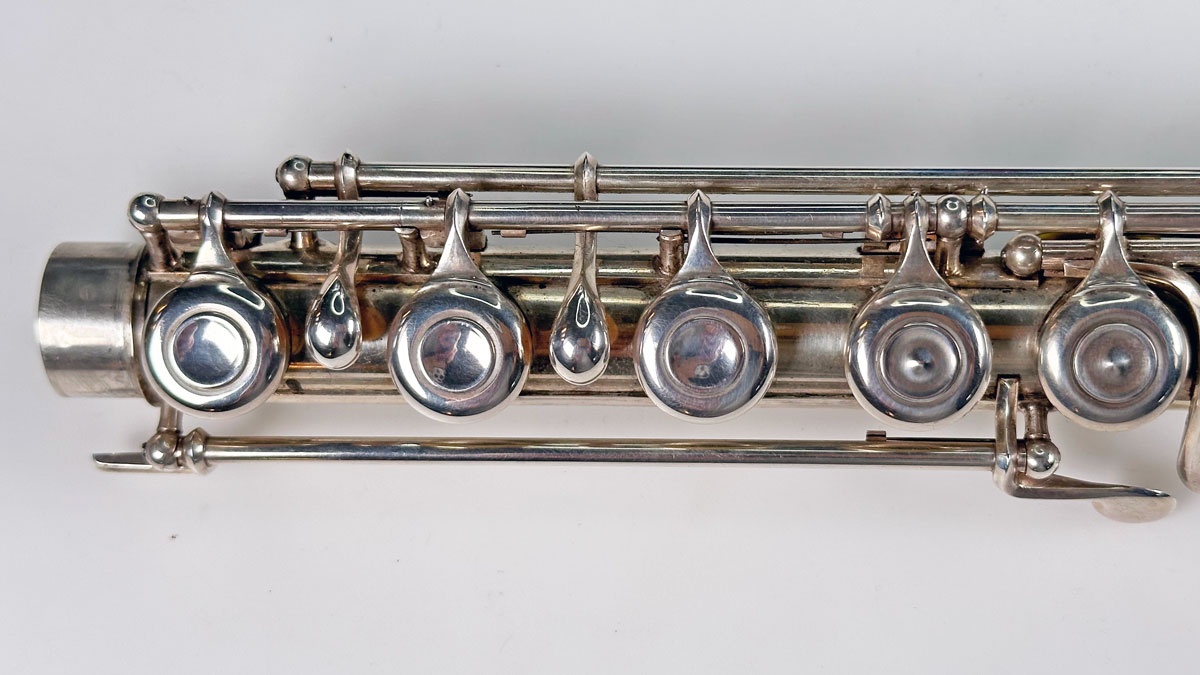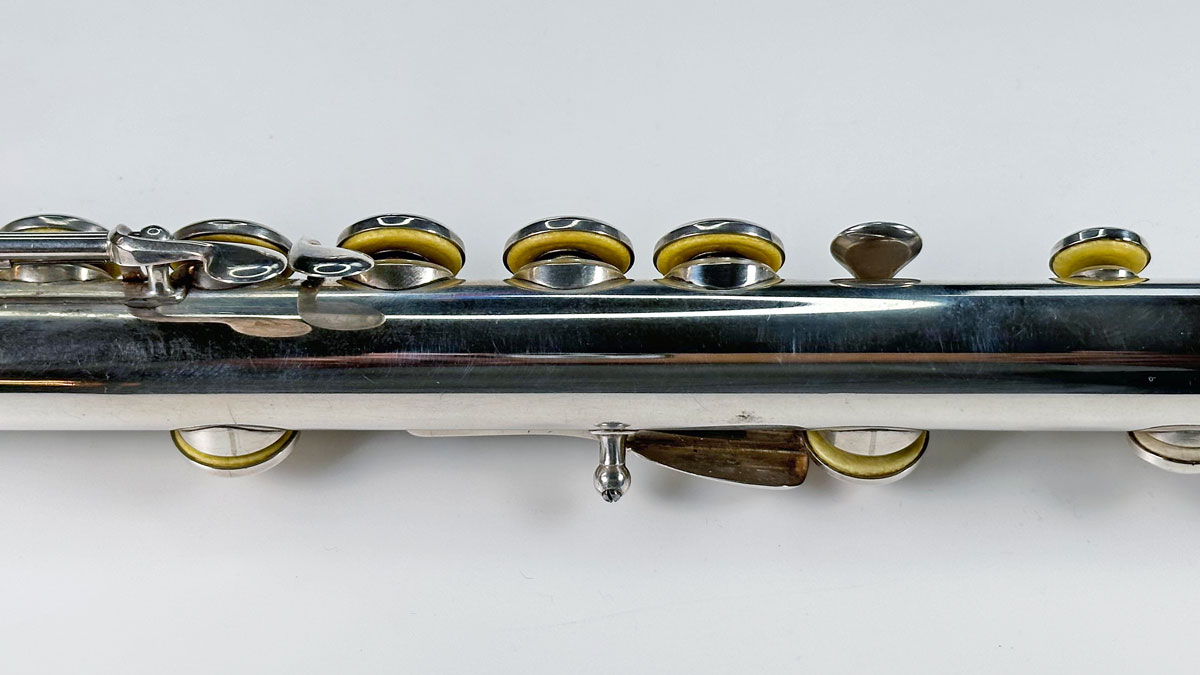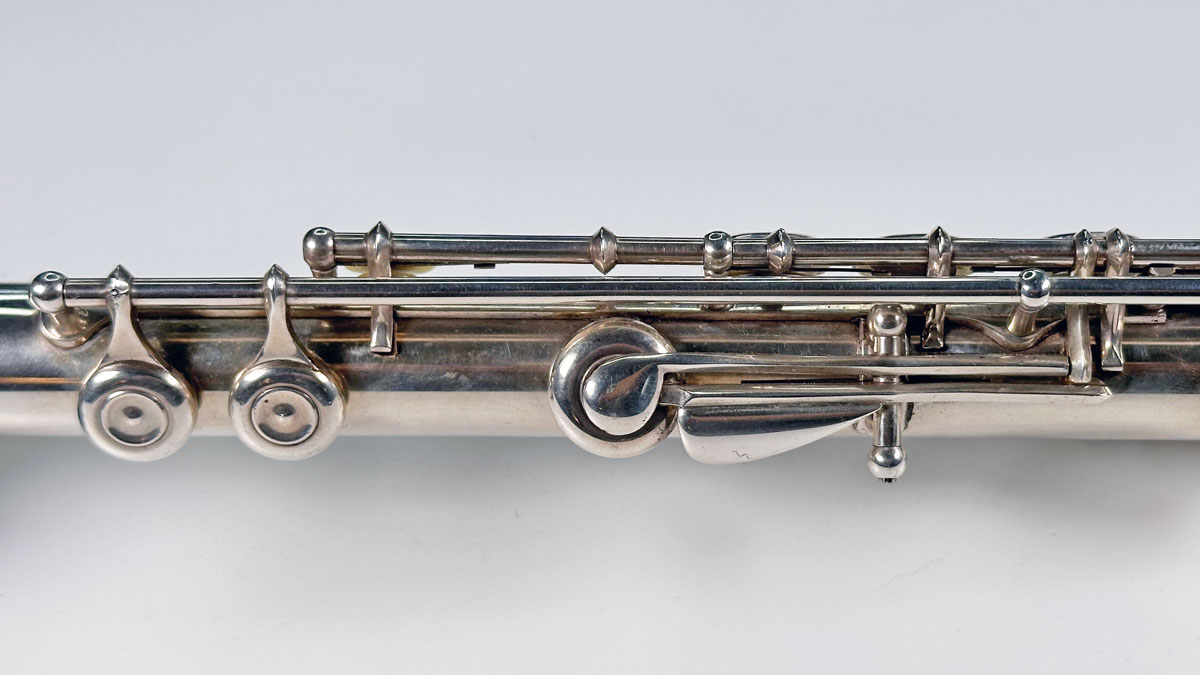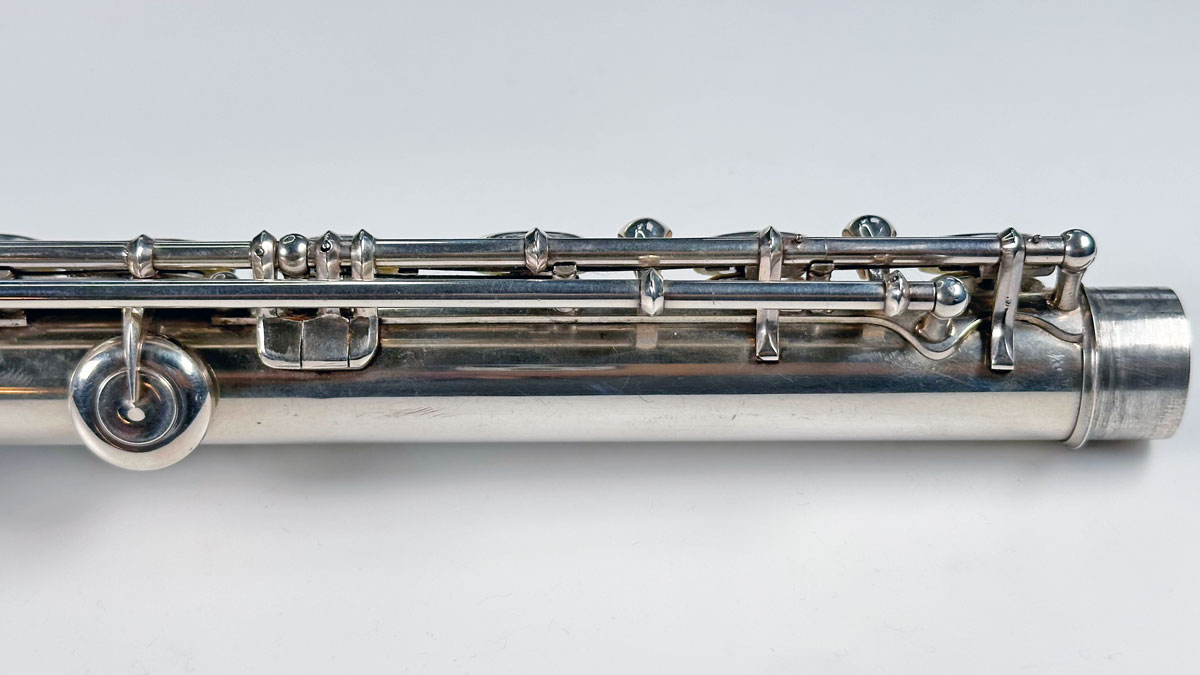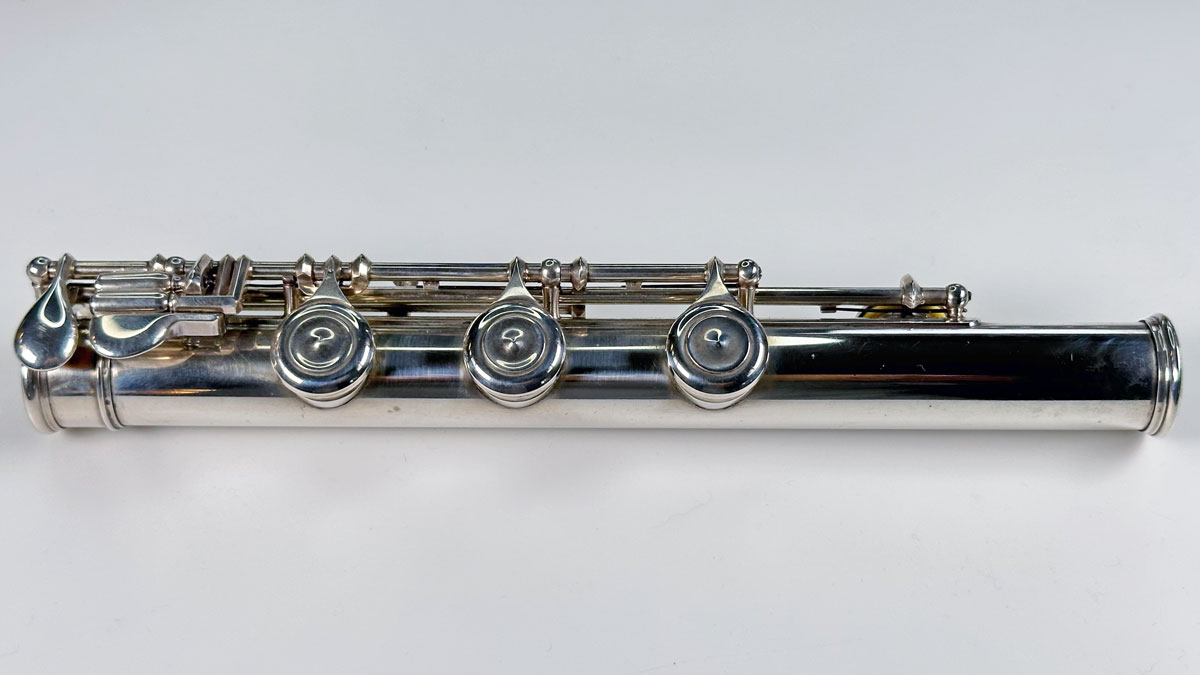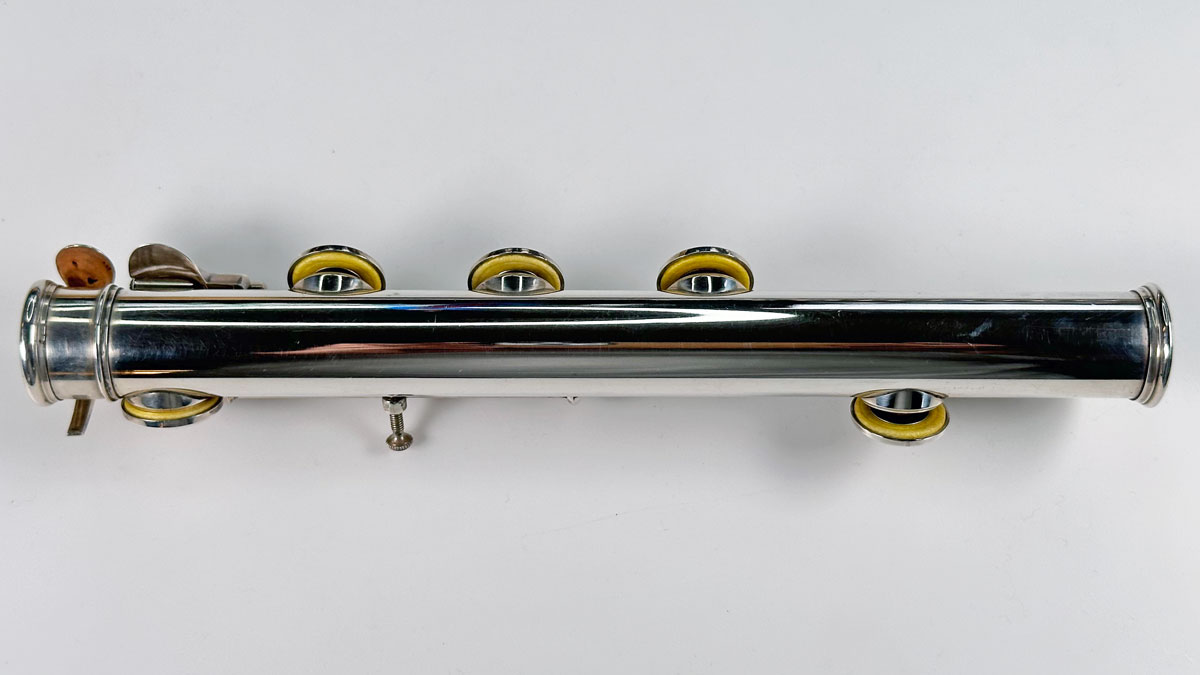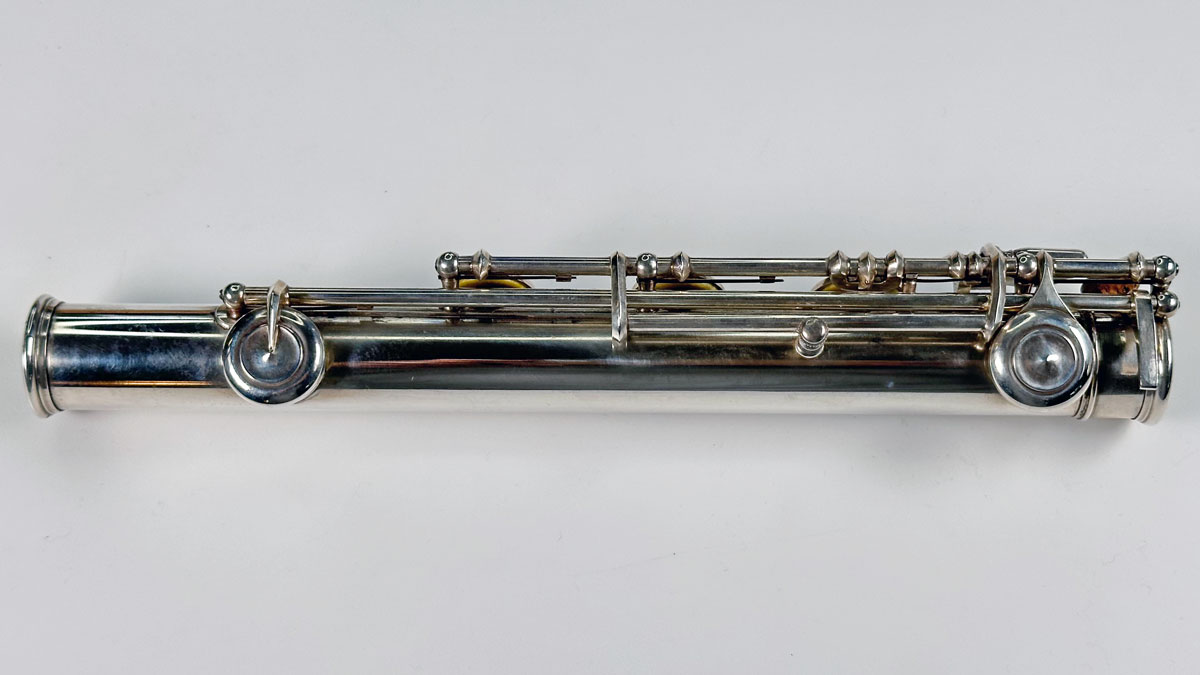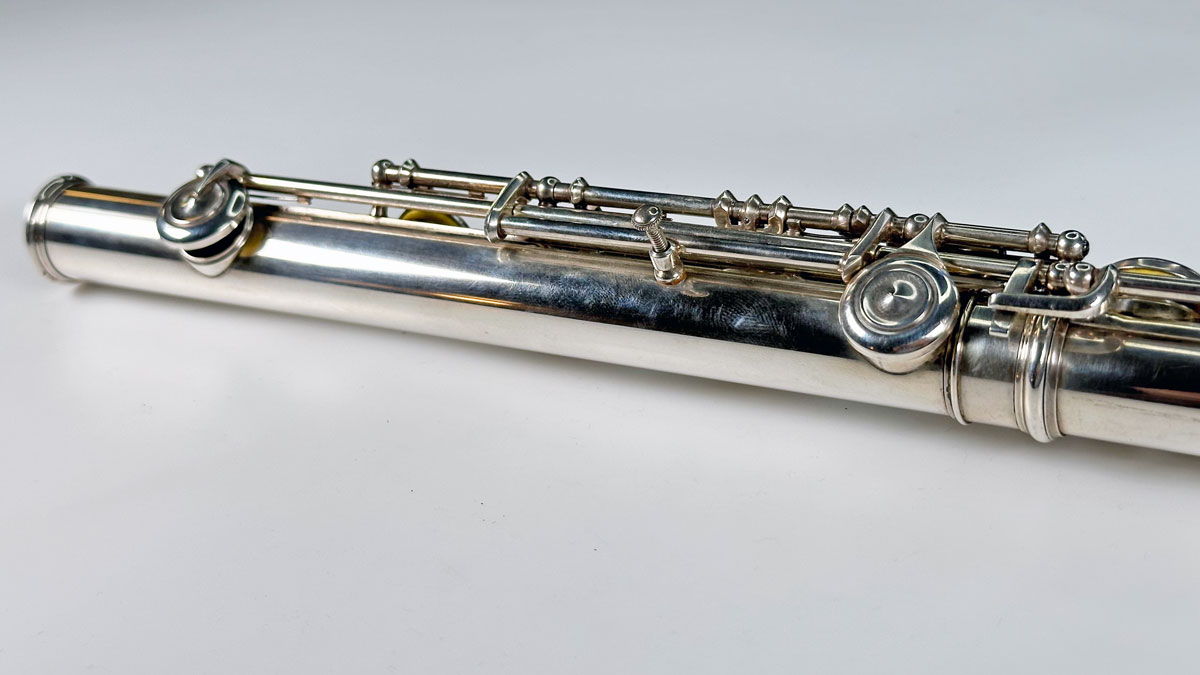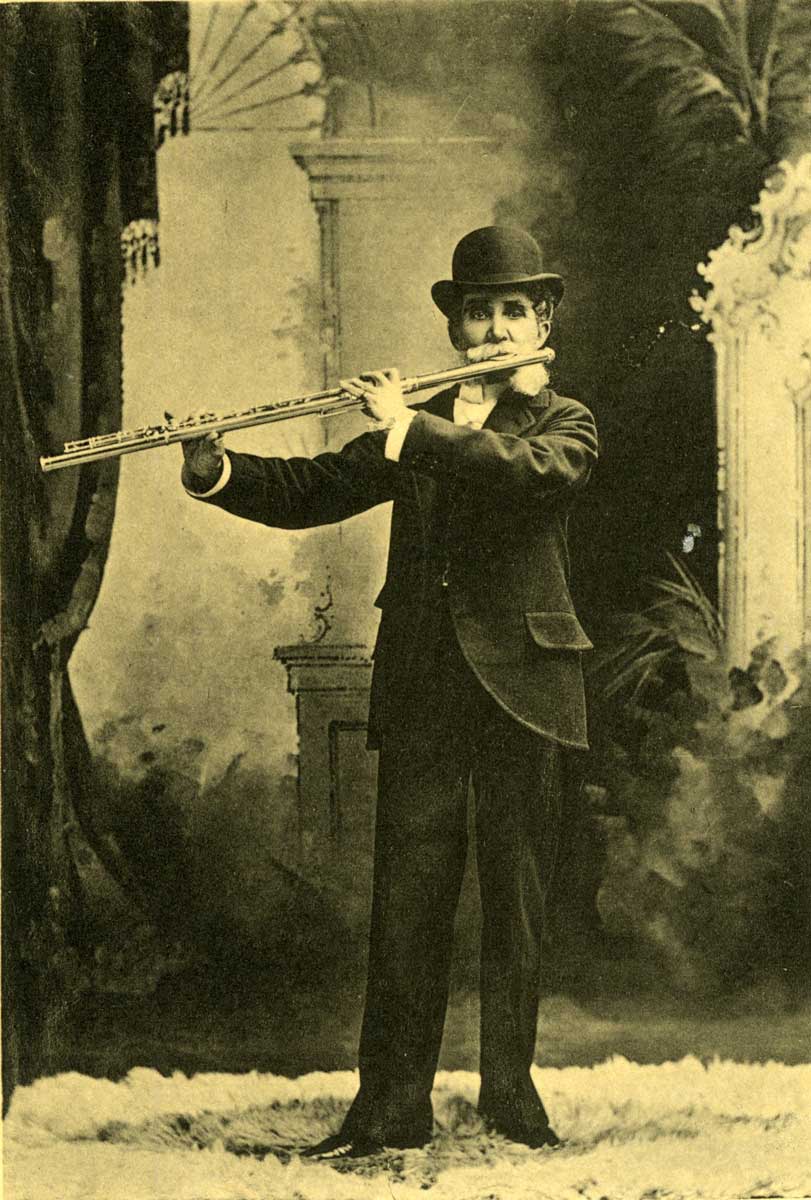- Made in New York, NY, in 1868
- Sterling silver, seamed tubing
- Soldered tone holes
- Closed hole
- Plateau keys
- Inline G
- Bb-foot with teardrop D# key
- Left-hand lever to close the Bb key
- Embouchure: 10.52 mm x 11.80 mm
- Weight: 464 g
- Traditional scale
- A=440 Hz
American flutemaker Alfred Badger (1814-1892) opened his workshop in 1838. He first produced superb conical Boehm flutes before switching to cylindrical Boehm flutes in the early 1850s. By the 1860s, he had settled on a combination of French pointed arms and German-covered keys, a style that Verne Powell would later refer to as the American model.
One of Badger’s staunch supporters was Henry Clay Wysham, who swore that his Badger was a match for the best French instruments, though he was not at all pleased about the cost. In 1868, Wysham wrote of Badger:
Naturally, taking his cue from the foreign manufacturers, whose fabulous prices stifled the sales and confined the use of the instruments to the “favored few of fortune’s favorites,” he leisurely toiled and reaped in his profits, and if customers were not very numerous, they were at least able to bear the strain of the enormous figures set upon their precious Boehms. It remained, however, for the European (especially English) Boehm Flute manufacturers to “out-Herod-Herod” in the extortions practiced upon purchasers. To get an instrument either of silver, wood, or ebonite to America from the leading manufacturers in London, or from the continent, costs from £30 to £35 (from $150 to $175) cash down–say £8 ($40) more for duties, increased to 45 percent by the Dingley tariff (1897)–and a long column of additional figures for brokerage, freight, insurance, etc., which brings your precious Boehm to the magnificent sum of about £50 sterling–about $250!! And this was exactly Badger’s figure in 1868 when the writer obtained his instrument.
The flute that Wysham referred to was the same model we offer here, descending to low Bb.
Famed flute collector Dayton Miller (1866-1941), whose flutes are now part of the Library of Congress, had the opportunity to measure Wysham’s flute. Its dimensions match perfectly with the flute we have for sale, allowing us to date it to 1868 as Badger continually updated his design.
Although Badger based the scale at A=446 Hz, one developed by Godfroy, the flute plays well at 440 with the head pulled out about ¼”, though C and C# in the second and third octaves will be a tad on the low side.
Badger provides a patented adjustment screw on the foot of this model, allowing the player to raise or lower the venting of the foot holes quickly. This feature allows for high venting when mainly playing low notes and low venting when playing in the upper registers, as the low venting aids in centering notes of the second register left hand and beyond.
The embouchure cut reflects Badger’s taste and tonal aesthetics. Badger offered four styles, and this one corresponds with no. 4 (see diagram below), a combination of oval and rectangle that he considered best. Other shapes may have been louder, but Badger was interested in sound quality, not volume.
With its well-crafted embouchure and extra metal in the foot, loudness is not necessarily required for this flute to carry through an orchestra. The sound is clean and crisp, with a level of resonance and density unique for flutes of this time period. Its compact sound is incredibly rich in overtones that projection is already built into the sound. This is the type of flute that projects with intensity rather than volume. Badger definitely had a strong concept of sound production!
The flute was fully restored in 2016 and has seldom been played. The pads are in excellent shape. The flute is housed in its original case, though the latch is non-functional. This flute is a wonderful piece of American flute history.
Price: $3,950
Sold as is. Sales tax applies to purchases within California. For inquiries on purchasing, please contact Gary Lewis.
